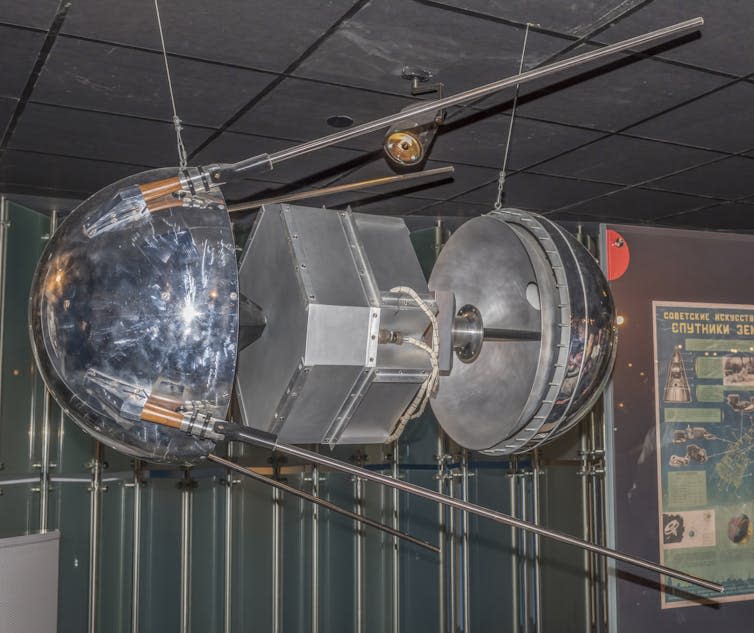While conflicts intensify on Earth, an arms race may also be taking place in space. On May 30, a US diplomat warned that Russia was “launching weapons into orbit”; Russian deputy foreign minister Sergey Ryabkov branded it “fake news”. This continues accusations by US and Russian officials in recent months that both countries are trying to place nuclear weapons in space.
Such action, if true, would be contrary to the UN’s 1967 Outer Space Convention; According to this agreement, all parties agreed that “any object carrying nuclear weapons or other weapons of mass destruction should not be placed in orbit around the Earth.” The agreement has now been ratified by 114 countries, including major space powers such as the United States, Russia, China, India, France, Japan and the United Kingdom.
News of possible nuclear weapons in space is alarming, especially as the race to exploit resources on the Moon, Mars and beyond, and to land and settle humans on land, intensifies. The potential weaponization of space has raised fears among many that the freedom to peacefully explore and use space is being eroded.
Weaponization of space would not only be dangerous to world peace, but would also threaten to hinder technological development on Earth. If the arms race in space escalates into a full-fledged war, it could lead to the use of weapons that could destroy valuable assets such as satellites. This disrupts our communication, navigation, and other innovations.
The UN Security Council has become a battleground over how to control the weaponization of space and war discourse. The security council consists of 15 countries, including five members with veto power, and is responsible for maintaining international peace and security.
In response to reports that Russia is developing a nuclear weapon against satellites to send into space, the United States and Japan submitted a draft resolution in April 2024 calling on all countries to prevent an arms race in space. Russia vetoed the resolution but said it was “absolutely committed” to the existing 1967 agreement. The veto caused the United States to question whether Moscow was hiding something.
Then in May 2024, Russia and China drafted a similar resolution underlining the need to “prevent the deployment, threat or use of any weapon in space.” This resolution was voted seven in favor and seven against. That’s why he couldn’t pass.
Armament area
Military interests, assets and personnel have always been at the forefront of the exploration and use of space. In fact, fears that the first satellites and humans to enter Earth orbit could provide a military and strategic advantage to the Soviet Union inspired the United States to view space as an extension of the arms race during the Cold War.
Following a series of nuclear tests in space by both the United States and the Soviet Union in the 1960s, a shared understanding of their destructiveness and threat to the Earth’s atmosphere later gave rise to the Outer Space Treaty. But while the treaty specifically bans weapons of mass destruction in space, it leaves room for uncertainty regarding other types of weapons.
As a result, the United States and the Soviet Union tested a variety of anti-satellite weapons both during and after the cold war. While China and India are also conducting missile tests against space satellites, it is considered that England, France, Israel, Japan, North and South Korea and Iran may also develop anti-satellite weapons.
The United States only became the first country to announce a ban in 2022, saying such missile tests were reckless. The tests create space debris that poses risks to active satellites and humans in orbit.

Weaponization of space poses a significant threat to the inclusivity and shared benefits of exploring and using space. Low Earth orbit has become increasingly crowded with the astronomical increase in the number of satellites launched by both established and emerging space nations.
Since 1957, more than 80 countries have placed a total of approximately 18,450 objects into orbit, according to UN records. And over the past three decades, at least 15 African countries have put 58 satellites into orbit, with another 100 in various stages of production on the continent. These are significant investments resulting from the desire for a degree of independence in access to space for socioeconomic development and security.
Countries aren’t the only ones sharing the benefits of space. The private sector is increasingly involved in space activities. For example, Elon Musk’s SpaceX has launched 6,500 Starlink satellites, 6,050 of which are still in orbit as of May 2024. This initiative aims to provide high-speed internet connections to remote and unconnected parts of the world.
However, cooperation between SpaceX’s Starlink and the US Department of Defense, which supports the activities of the Ukrainian military in its conflict with Russia, makes them a potential target in the event of a Russian nuclear attack on space.
The threat posed by the arms race in space needs to be recognized and addressed. Renewed cooperation among the world’s major powers and support for the UN framework is critical to ensuring the peaceful and inclusive exploration and use of space.
This article is republished from The Conversation under a Creative Commons license. Read the original article.


The authors do not work for, consult, own shares in, or receive funding from any company or organization that would benefit from this article, and have disclosed no relevant affiliations beyond their academic duties.